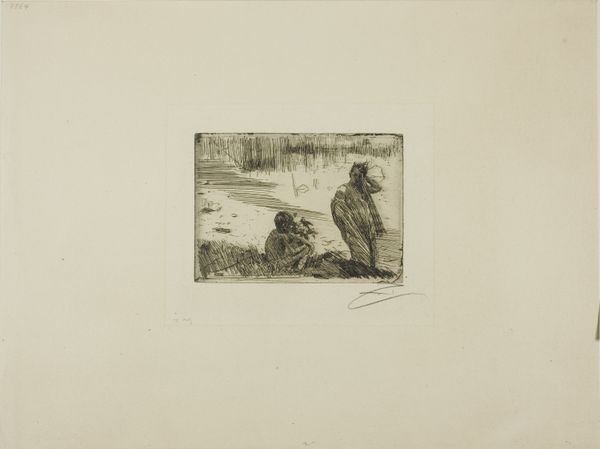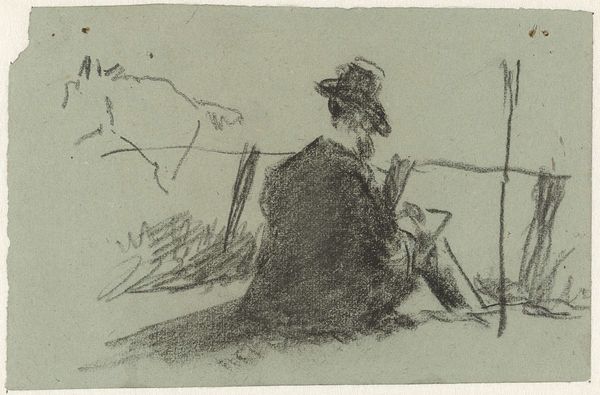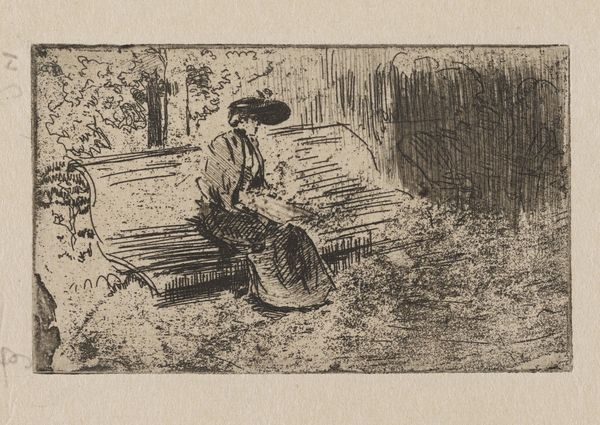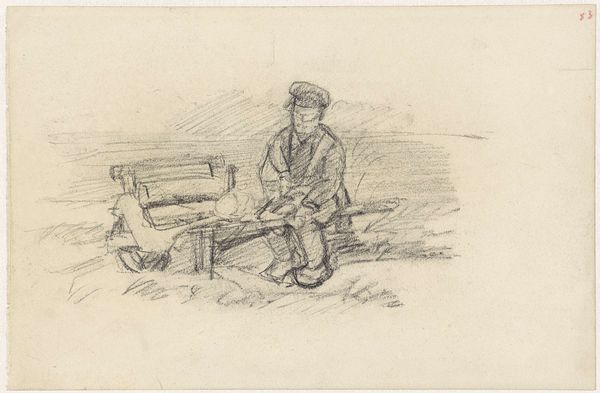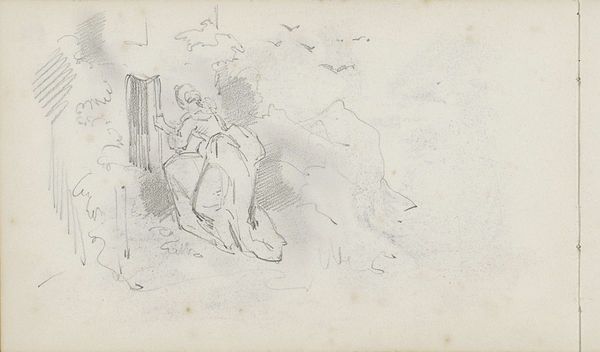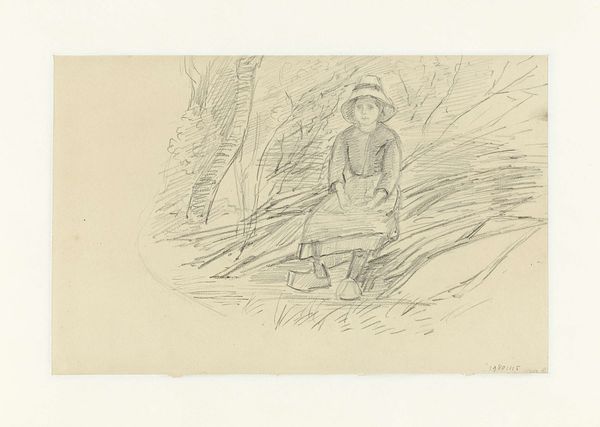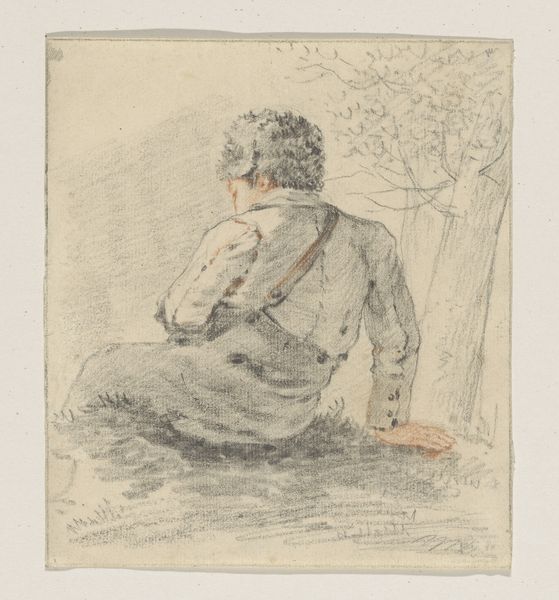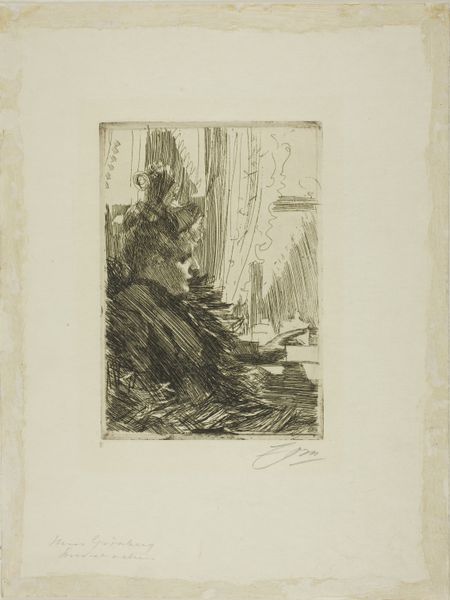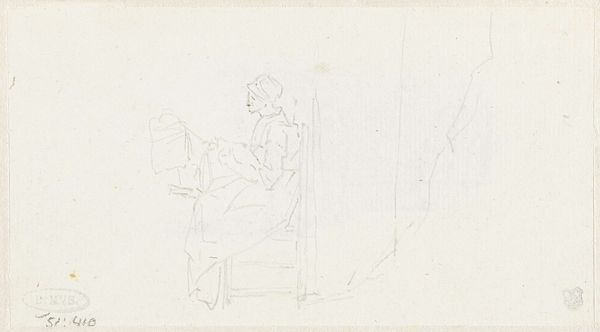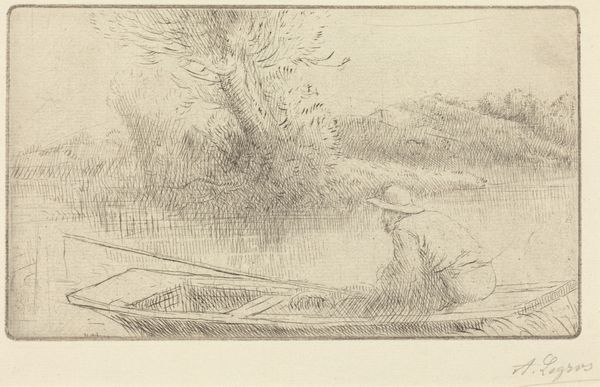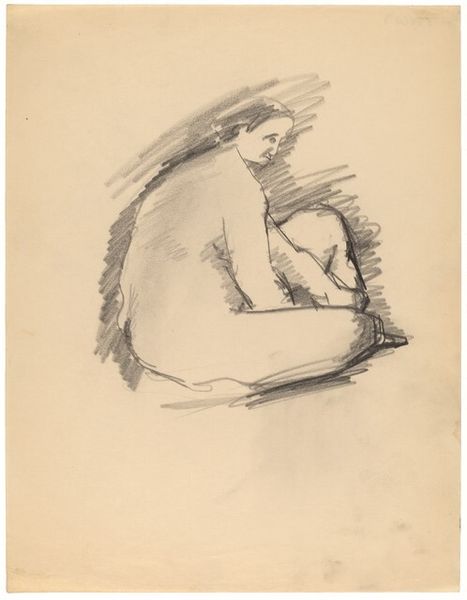
drawing, print, etching
#
portrait
#
drawing
# print
#
etching
#
landscape
#
etching
#
figuration
#
line
Copyright: National Gallery of Art: CC0 1.0
Curator: This is Harold Altman's "Park Bench," an etching dating to 1961. What strikes you initially? Editor: It's wistful. The grey tones and hazy lines create a dreamlike atmosphere. The figure seems almost to dissolve into the surrounding foliage. Curator: Observe how Altman employs line in this print. Notice the density and direction of marks to render form, light, and shadow. The woman, her dress, the bench—all defined by this accumulation of fine strokes. Editor: Yes, it is through this visual texture that we understand the psychological state, too. A solitary figure; it’s almost a cliché of introspection. The bench, an accessible and mundane object, contrasts starkly with the emotion it's invoking. Is this loneliness or simply quiet contemplation? Curator: I'm drawn to the spatial ambiguity. Figure and background merge. The conventional distinction of subject and environment blurs through consistent mark-making. What does that formal unity suggest to you? Editor: Perhaps it suggests interconnectedness? That the individual's feelings are inseparable from the surrounding world? The tree behind her becomes a symbol, her emotional backdrop or even a metaphorical mirror of her inner life. I notice it has no leaves - symbolic of being barren. Curator: Perhaps. Or consider how this technique flattens the image. Perspective diminishes as line becomes both descriptive and decorative, calling attention to the surface itself. There's a tension there. Editor: It is captivating how such simplicity—a bench, a figure, a tree—becomes a meditation on the self. Curator: Indeed. Altman demonstrates how basic formal components are imbued with meaning and mood through his delicate articulation and sensitive arrangements. Editor: The subtlety encourages deeper reflection, inviting the viewer to fill in the unspoken narrative and perhaps, see ourselves in the scene.
Comments
No comments
Be the first to comment and join the conversation on the ultimate creative platform.
